Two-Up Two-Down House transforms a terrace into an ambitious London home
Mark Bonshek and Sabba Khan’s Two-Up Two-Down House is an ambitious design for their traditional Victorian terrace house
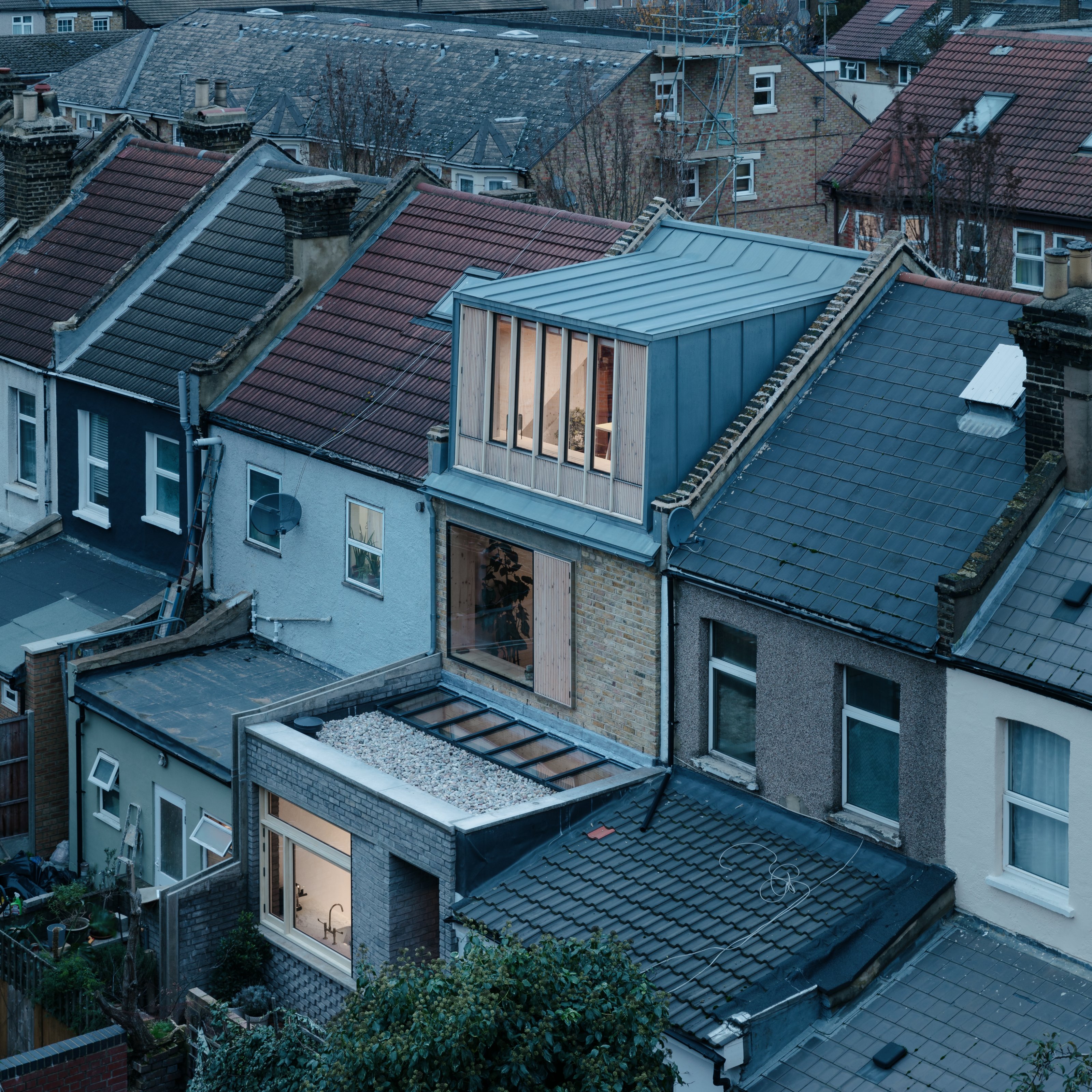
Two-Up Two-Down House exemplifies just how the typical London terrace can be a blank canvas for the adventurous architect. For the project, husband and wife architectural practice Khan Bonshek took on a substantial project to completely overhaul a Victorian house in East London. The resulting home radically rearranges the interior volumes, pushing the space right to the limit of what's possible, while adding a modest brick rear and rooftop extension.
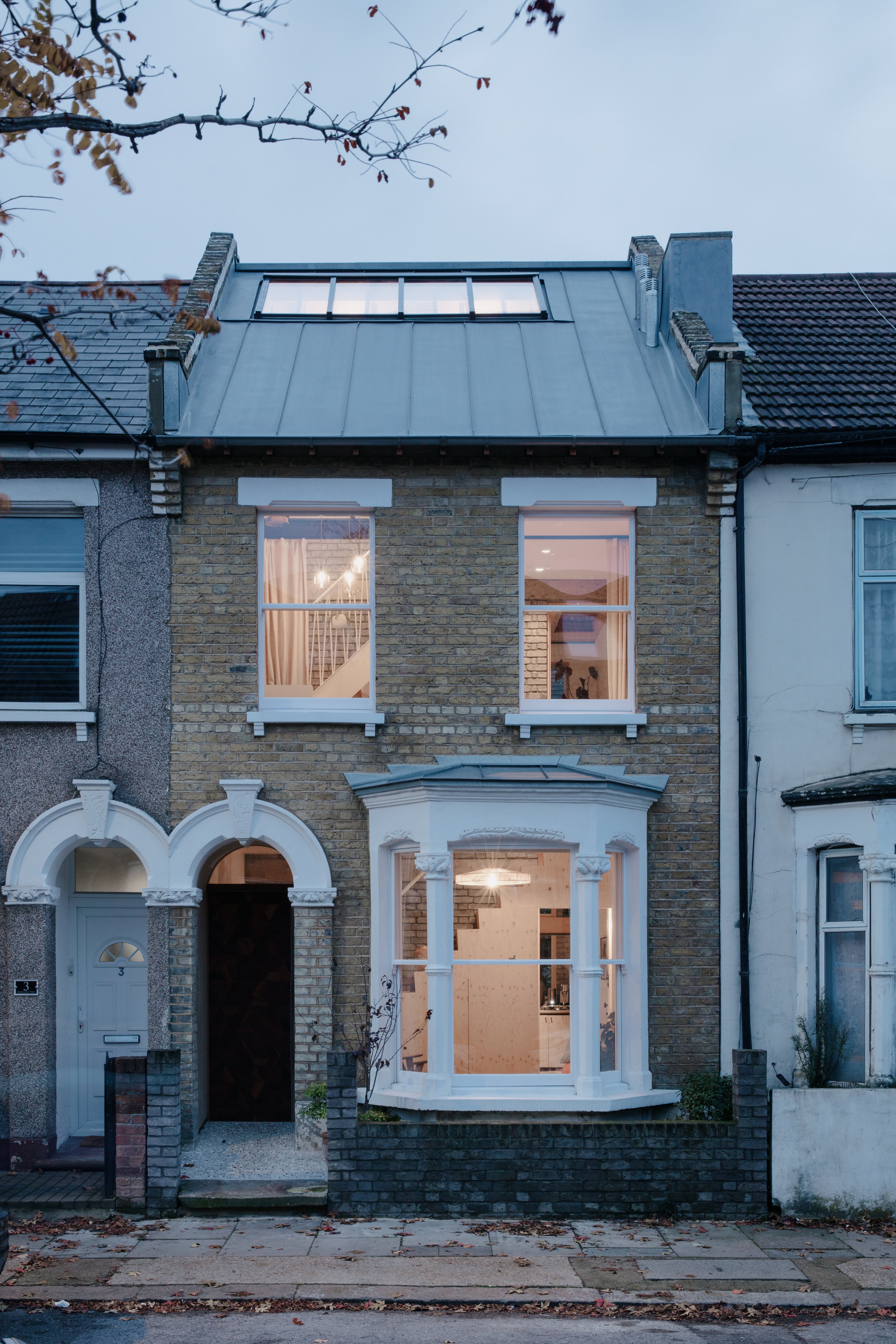
Two-Up Two-Down House by Khan Bonshek
The architects did most of the work themselves. Mark Bonshek previously worked at Liddicoat Goldhill, whilst Sabba Khan’s work ranges from architectural design to an award-winning graphic novel, The Roles we Play.
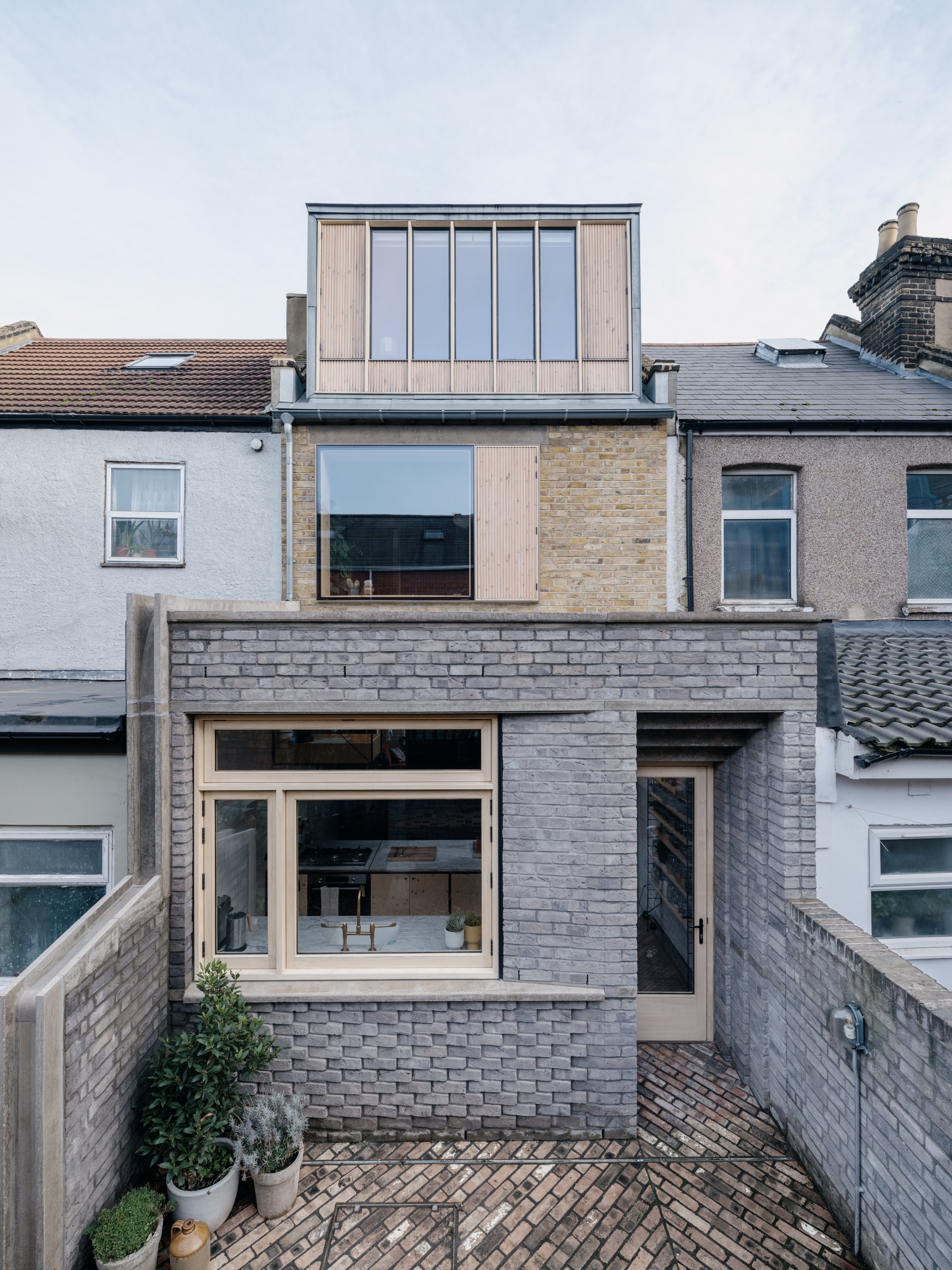
‘Acting as client, architect and contractor allowed us to to be highly experimental both spatially and with materiality,’ they said, as the quality and diversity of the interior finishes and spaces attest. In the heart of the house is a triple height staircase, rising up to the loft extension alongside the central spine wall. By removing practically every internal wall and floor, the duo had a blank slate on which to work.
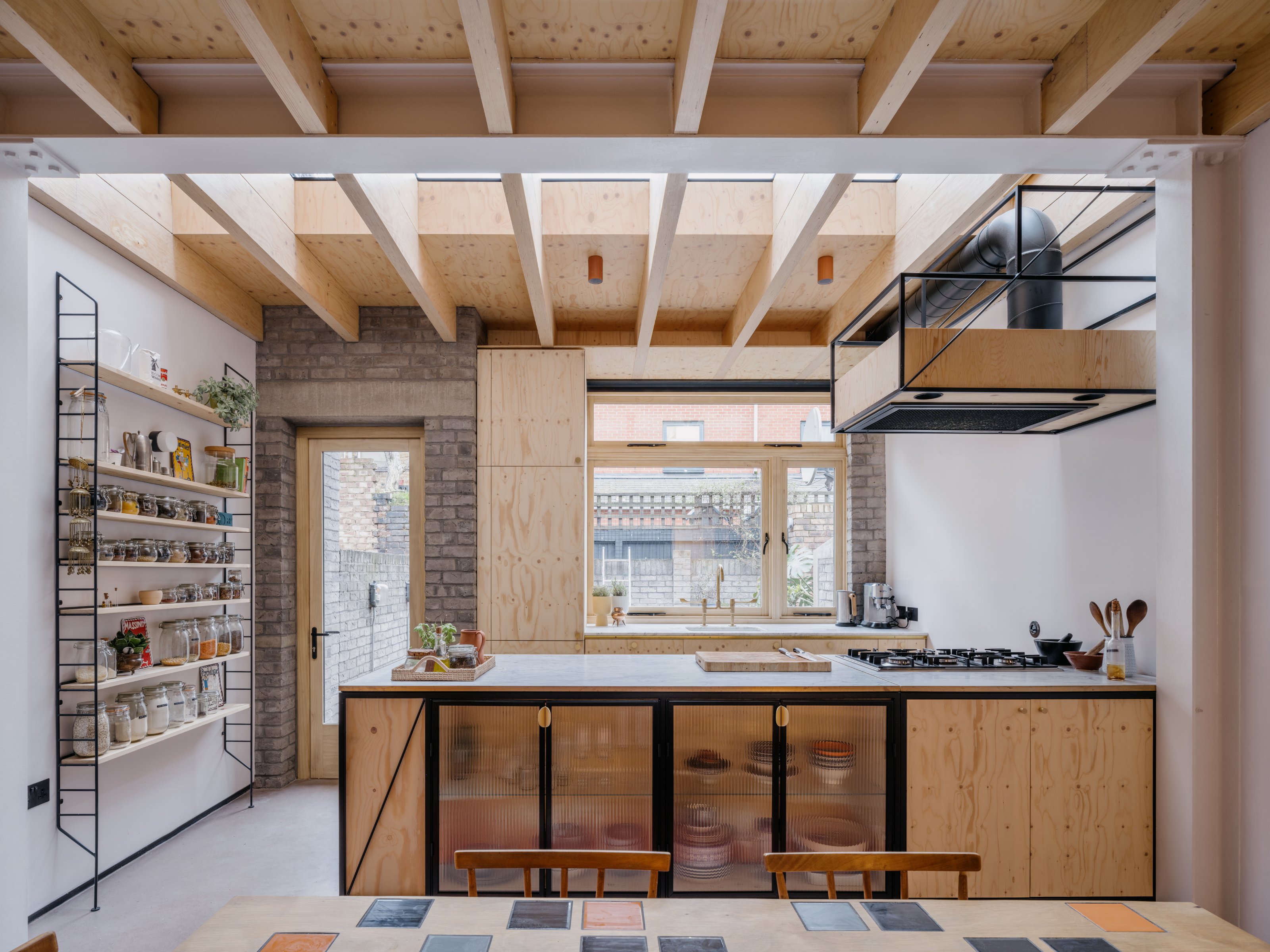
The relatively tight area has been given a new lease of life by a more expansive floorplan, with views out and across the length of the space, and out through the enlarged windows on the rear façade. The ground floor retains the original layout but refines the detailing, with a living room, dining room and kitchen in the rear extension.
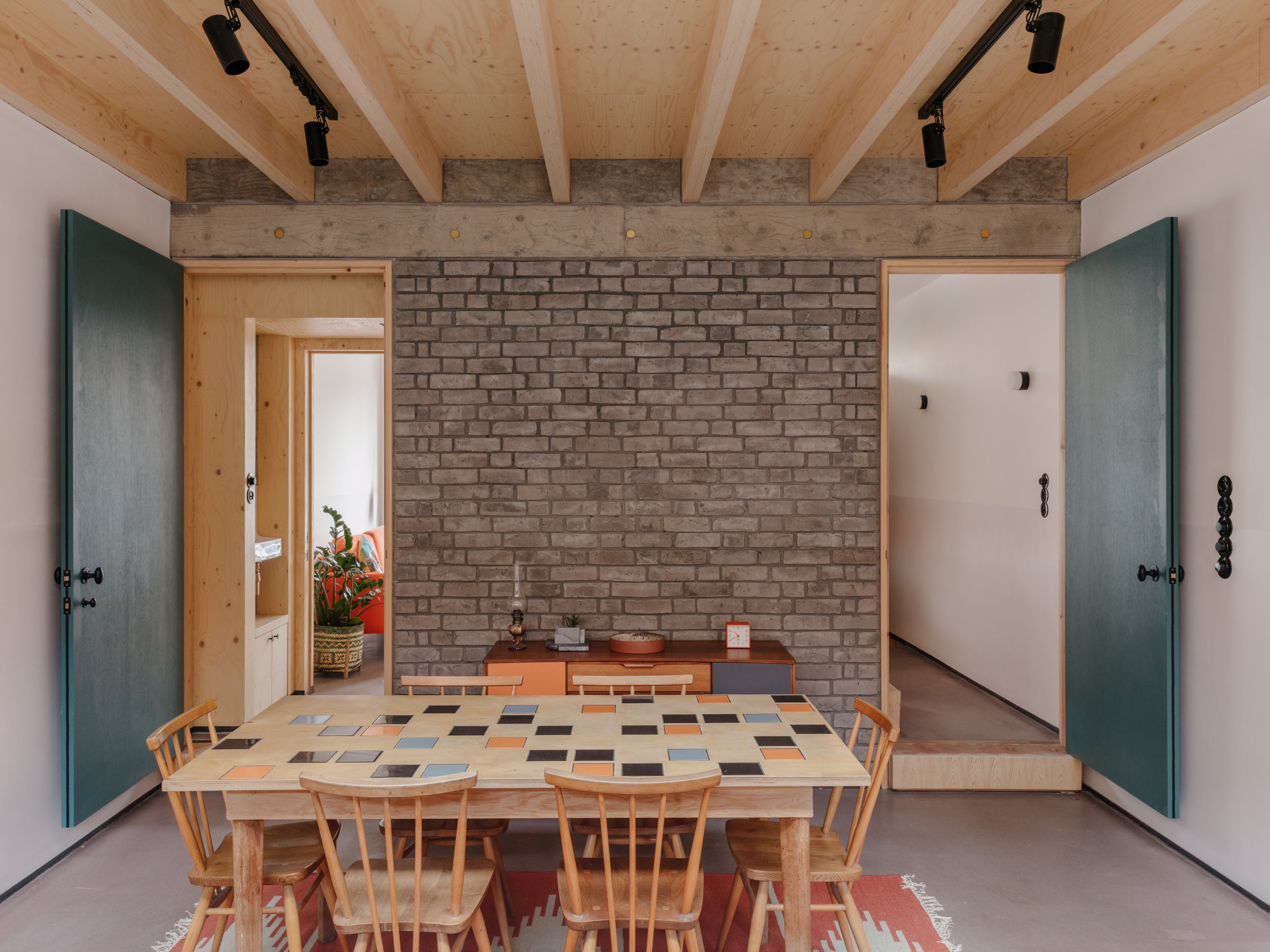
Throughout the project, special attention has been paid to the joinery and brickwork, exploring unusual patterns and textures, with all materials left exposed and uncovered. The five year build process allowed the duo to test out a number of different ideas, including casting and fabricating metal. ‘The end result is unusual, unexpected and a real labour of love across every aspect of the home,’ they say.
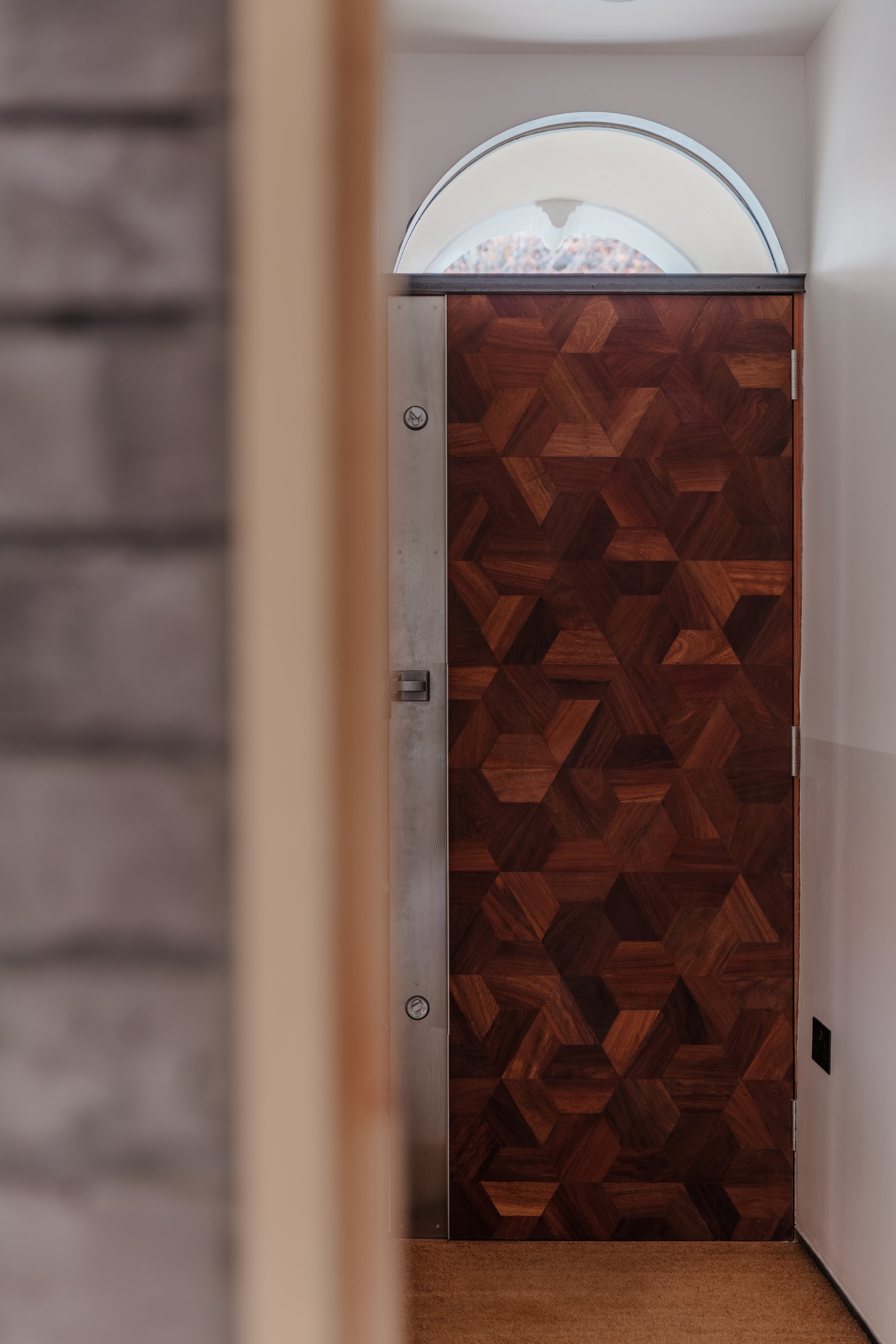
In addition to concrete tie-beams, pre-cast concrete sills and bare brick walls, the project makes extensive use of sustainable spruce plywood and recycled plastics, along with reclaimed teak floors and black marble and brass detailing. The front door is finished in marquetry flooring offcuts, while the central steel staircase is finished in white, with timber treads and a ribbon balustrade.
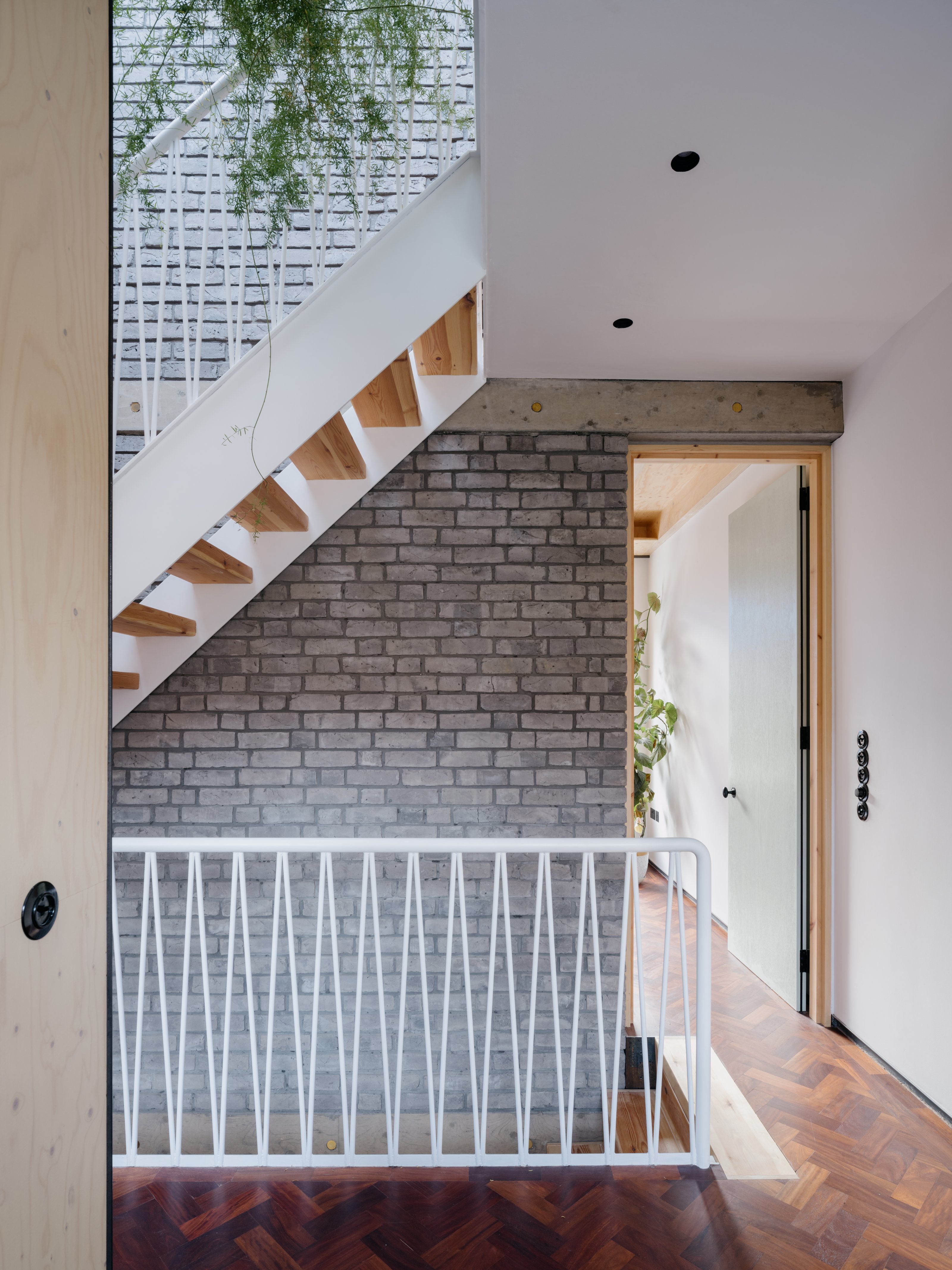
A big part of the process was ensuring waste was kept to a minimum and existing materials were reused wherever possible. The terrazzo garden path uses marble offcuts from a V&A project, much of the flooring was left over from another job and dates back to the 1920s.
Receive our daily digest of inspiration, escapism and design stories from around the world direct to your inbox.
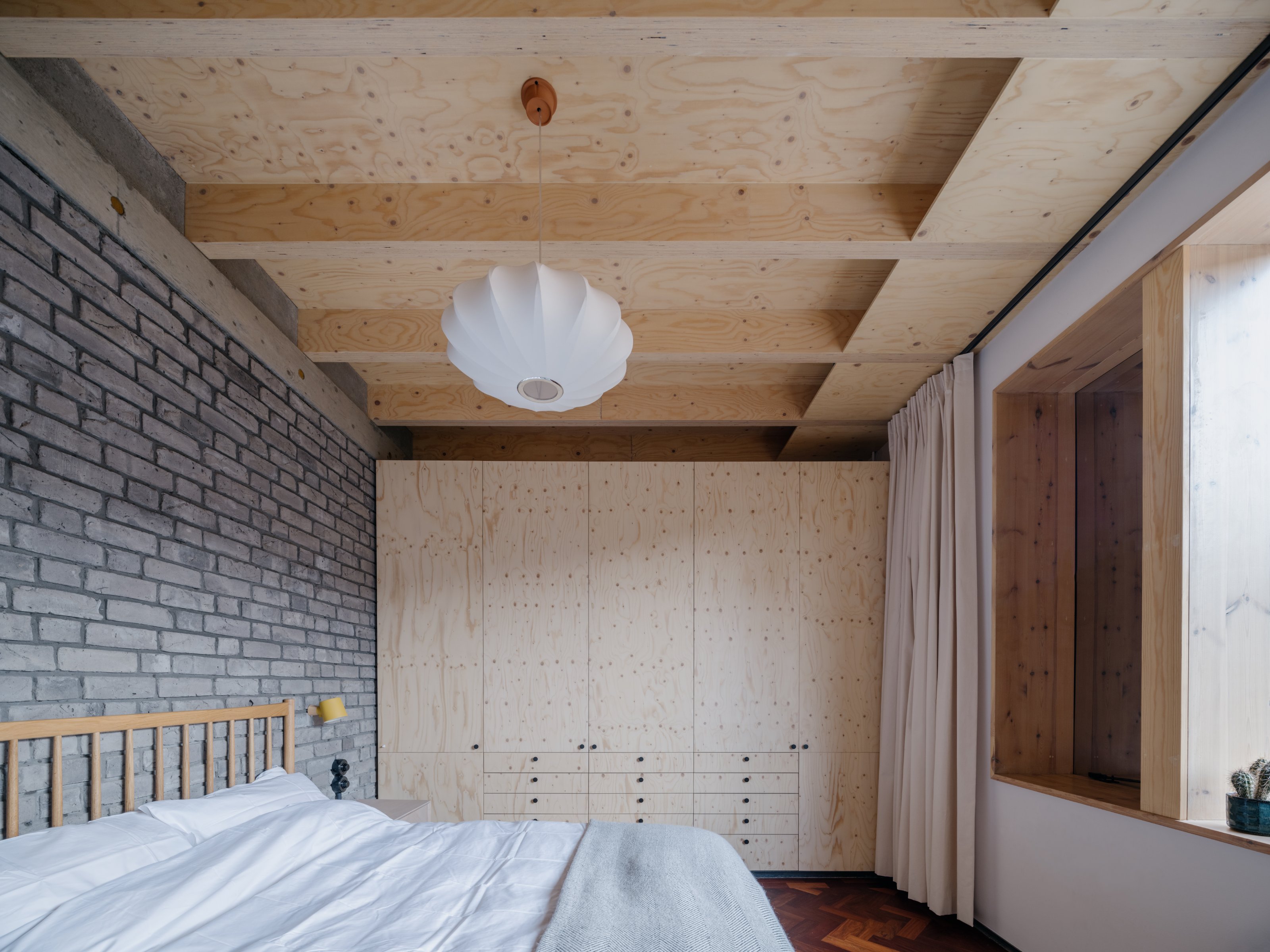
Upstairs is the master bedroom and bathroom, alongside a modest reading/music room, while the stair continues up to attic level where there’s a office/second bedroom and a landing set beneath a run of roof-lights. Space is also saved by elements like the concealed downstairs WC beneath the stairs, the kitchen unit on wheels and discrete built-in storage.

The studio is currently working on a refit of the Pyramid House, an iconic structure designed by Wigley Fox architects and built for Homeworld ’81, an exhibition of thirty-six futuristic houses built in Milton Keynes. Their scheme seeks to protect the character of the house while furthering the ambitious goals of the original expo, which included a far-sighted emphasis on energy efficiency.
Jonathan Bell has written for Wallpaper* magazine since 1999, covering everything from architecture and transport design to books, tech and graphic design. He is now the magazine’s Transport and Technology Editor. Jonathan has written and edited 15 books, including Concept Car Design, 21st Century House, and The New Modern House. He is also the host of Wallpaper’s first podcast.
-
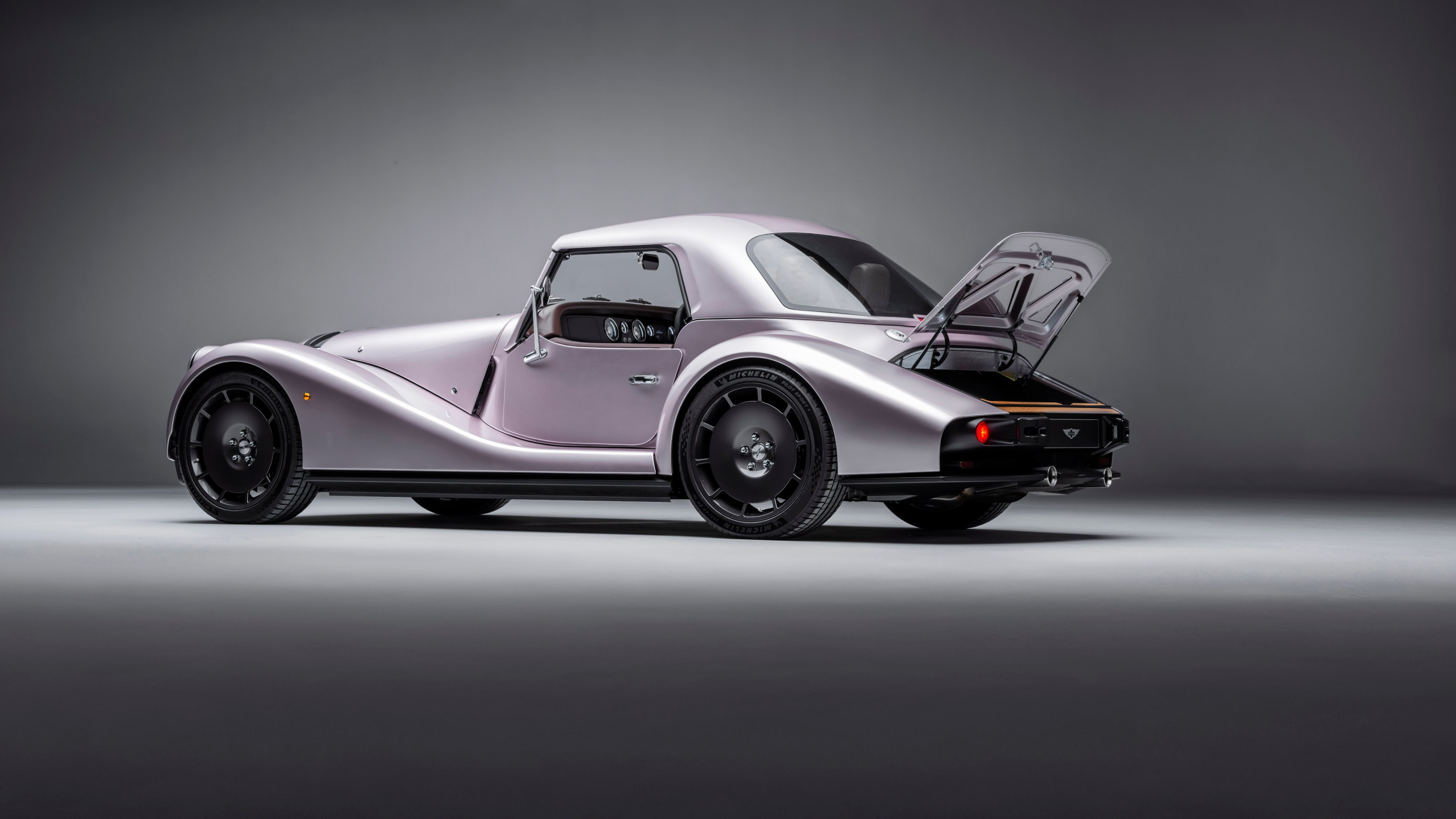 Year in review: 2025’s top ten cars chosen by transport editor Jonathan Bell
Year in review: 2025’s top ten cars chosen by transport editor Jonathan BellWhat were our chosen conveyances in 2025? These ten cars impressed, either through their look and feel, style, sophistication or all-round practicality
-
 Eddie Olin's furniture that merges heavy metal with a side of playfulness
Eddie Olin's furniture that merges heavy metal with a side of playfulnessWallpaper* Future Icons: London-based designer and fabricator Eddie Olin's work celebrates the aesthetic value of engineering processes
-
 This retreat deep in the woods of Canada takes visitors on a playful journey
This retreat deep in the woods of Canada takes visitors on a playful journey91.0 Bridge House, a new retreat by Omer Arbel, is designed like a path through the forest, suspended between ferns and tree canopy in the Gulf Island archipelago
-
 Arbour House is a north London home that lies low but punches high
Arbour House is a north London home that lies low but punches highArbour House by Andrei Saltykov is a low-lying Crouch End home with a striking roof structure that sets it apart
-
 A former agricultural building is transformed into a minimal rural home by Bindloss Dawes
A former agricultural building is transformed into a minimal rural home by Bindloss DawesZero-carbon design meets adaptive re-use in the Tractor Shed, a stripped-back house in a country village by Somerset architects Bindloss Dawes
-
 RIBA House of the Year 2025 is a ‘rare mixture of sensitivity and boldness’
RIBA House of the Year 2025 is a ‘rare mixture of sensitivity and boldness’Topping the list of seven shortlisted homes, Izat Arundell’s Hebridean self-build – named Caochan na Creige – is announced as the RIBA House of the Year 2025
-
 In addition to brutalist buildings, Alison Smithson designed some of the most creative Christmas cards we've seen
In addition to brutalist buildings, Alison Smithson designed some of the most creative Christmas cards we've seenThe architect’s collection of season’s greetings is on show at the Roca London Gallery, just in time for the holidays
-
 In South Wales, a remote coastal farmhouse flaunts its modern revamp, primed for hosting
In South Wales, a remote coastal farmhouse flaunts its modern revamp, primed for hostingA farmhouse perched on the Gower Peninsula, Delfyd Farm reveals its ground-floor refresh by architecture studio Rural Office, which created a cosy home with breathtaking views
-
 A revived public space in Aberdeen is named Scotland’s building of the year
A revived public space in Aberdeen is named Scotland’s building of the yearAberdeen's Union Terrace Gardens by Stallan-Brand Architecture + Design and LDA Design wins the 2025 Andrew Doolan Best Building in Scotland Award
-
 The Architecture Edit: Wallpaper’s houses of the month
The Architecture Edit: Wallpaper’s houses of the monthFrom wineries-turned-music studios to fire-resistant holiday homes, these are the properties that have most impressed the Wallpaper* editors this month
-
 A refreshed 1950s apartment in East London allows for moments of discovery
A refreshed 1950s apartment in East London allows for moments of discoveryWith this 1950s apartment redesign, London-based architects Studio Naama wanted to create a residence which reflects the fun and individual nature of the clients